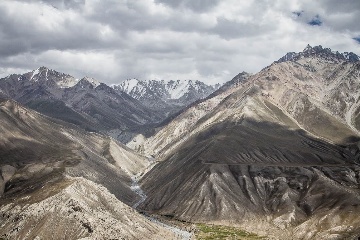Located in the border shared by Tajikistan and Afghanistan, also known as the Wakhan Corridor, is situated in the eastern part of Afghanistan, extending into the Pamir Plateau. It is bordered by the Pamir Mountains to the north and the Hindu Kush Mountains to the south. The corridor runs in an east-west direction, with its western end starting from the upper Amu Darya River (known as the Oxus River in ancient times) and its eastern end connecting to China's Xinjiang region. The corridor is approximately 300 kilometers long, with the narrowest point spanning just 15 kilometers and the widest point about 75 kilometers.

The Wakhan Valley has a rich history, serving as a crucial corridor for trade and cultural exchange between Central Asia and South Asia. It was an important part of the ancient Silk Road, facilitating the movement of goods, ideas, and people across the region. Historical figures such as the Chinese monk Xuanzang, who traveled through the valley during his journey to India in the 7th century, have left their mark on the area.
Today, the Wakhan Valley remains one of the most remote and sparsely populated regions in the world. The area is known for its natural beauty and the resilience of its inhabitants, who rely on pastoralism and small-scale agriculture for their livelihoods. The corridor's strategic location has also made it a subject of geopolitical interest, with ongoing efforts to develop infrastructure and promote economic opportunities in the region.




































